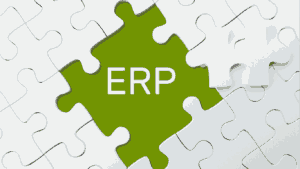
Recognize the Need for Change
Before diving into a product search, identify the core reasons your business needs a new ERP. If you are experiencing any of the following, it is time to consider a change:
- Manual inefficiencies: Your teams spend excessive time on manual data entry and error-prone workarounds.
- Data inconsistencies: Different departments rely on separate spreadsheets, leading to conflicting information and a lack of a “single source of truth.”
- Limited visibility: You lack real-time insights into key performance indicators (KPIs), making it difficult to make fast, data-driven decisions.
- Lack of scalability: Your current systems cannot handle your growth in transaction volume, number of users, or geographical footprint.
- Outdated technology: A legacy system is inflexible, expensive to maintain, and frustrating for employees, which can impact morale.
Establish a Strategic Selection Process
1. Form a Cross-Functional Selection Team
2. Define Business Goals and Map Processes
3. Determine the Right "Tier" and Deployment Model
The ERP market includes a wide array of solutions, often categorized by complexity and target business size.
For Smaller Companies (SMBs): Consider affordable, cloud-based options that are quick to implement and offer essential features like financial management, inventory, and CRM.
For Larger Enterprises: A more comprehensive, advanced system with a longer implementation timeline may be necessary.
Evaluate your hosting preferences, considering a cloud-based, on-premise, or hybrid solution. Cloud ERP offers greater accessibility, automatic updates, and lower upfront costs, while an on-premise solution offers more data control. Many modern ERP platforms offer a modular design, allowing you to implement core functionality and add modules as you grow.
4. Conduct Thorough Vendor Research and Evaluation
Create a shortlist of potential vendors based on your documented requirements and conduct thorough research.
- Industry Experience: Look for a vendor with a proven track record in your specific industry. An ERP poorly suited for your business may require extensive, costly customization.
- Vendor Stability: Evaluate the vendor’s financial stability and longevity to ensure they will be a reliable long-term partner.
- Request a Demo: Control the vendor demonstration process by providing your own real-world business scenarios and asking targeted questions. Involve your internal stakeholders and use a standardized scoring method to compare vendors objectively.
- Contact References: Ask for references from current customers, especially those in similar industries and with a comparable business size.
5. Cash Flow and Working Capital Optimization
Do not let the sticker price be your only guide. Analyze the TCO, which includes far more than the initial purchase price.
- Upfront Costs: Software licenses or subscription fees, hardware, and implementation services, including configuration and data migration.
- Ongoing Expenses: Maintenance, support, and periodic upgrades.
- Hidden Costs: Training, backfilling team resources during implementation, and potential productivity dips during the transition.
6. Plan for Implementation and Change Management
A successful ERP project relies on more than just the technology; it hinges on user adoption.
- Develop a Detailed Plan: Create a comprehensive implementation plan outlining key milestones, resource allocation, and timelines.
- Prioritize Training: Ensure that users are adequately trained on the new system. A user-friendly interface with a low learning curve is key to high adoption rates and minimal resistance.
- Structure Support: Work with your vendor to establish a post-implementation support plan to address issues quickly and drive continuous improvement.


